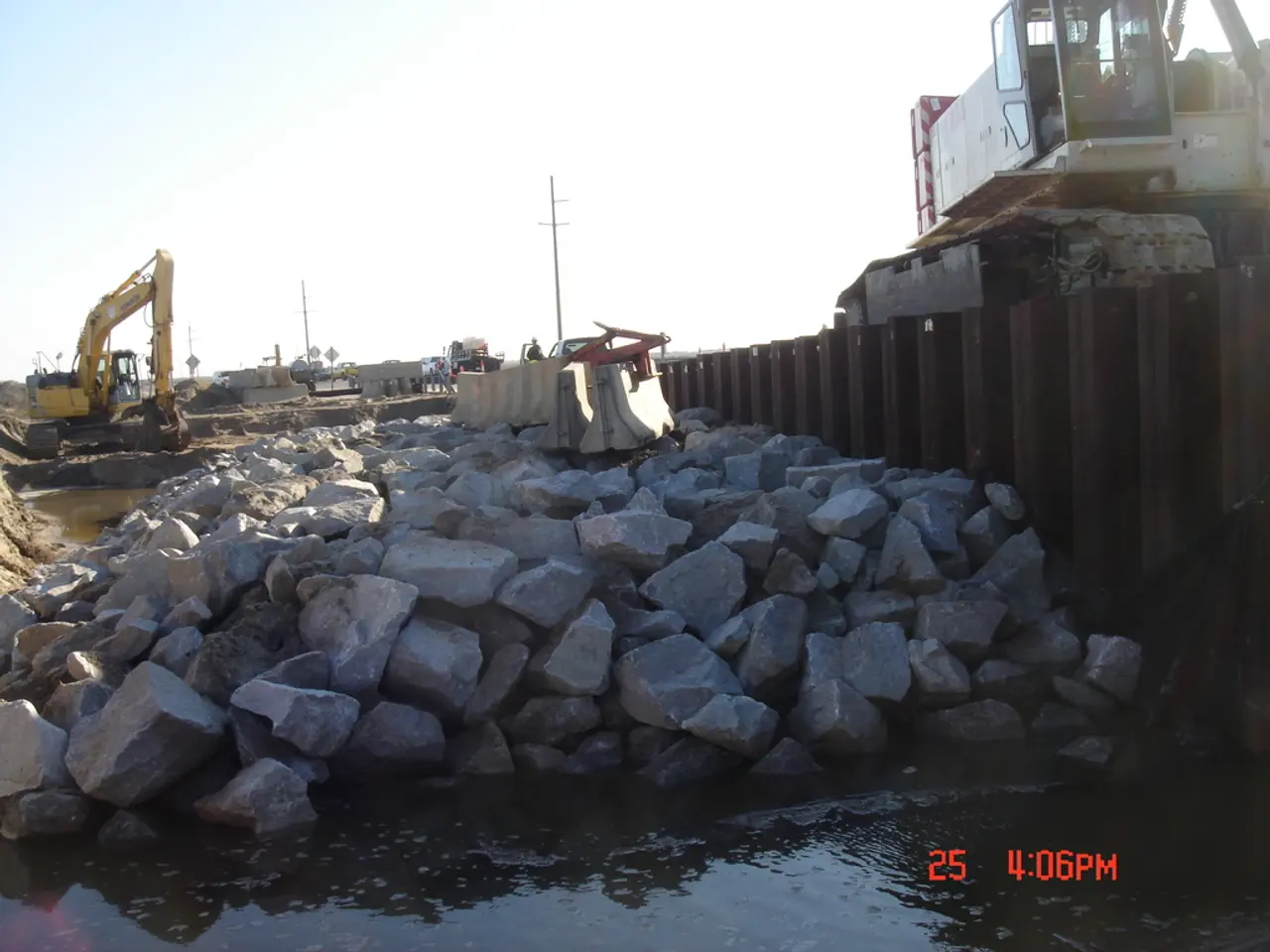Magnetic field of Earth deteriorating - ancient crystals from vanished civilizations may offer insights into the cause
In the realm of geophysics, two intriguing magnetic anomalies have recently captured the attention of scientists: the Levantine Iron Age Anomaly (LIAA) and the South Atlantic Anomaly (SAA). These anomalies, which are caused by complex disruptions in Earth's magnetic field, have significant implications for our understanding of the planet's past and present.
Ron Shaar, a geologist at The Hebrew University of Jerusalem, and Erez Ben-Yosef, an archaeologist at Tel Aviv University, have been at the forefront of this fascinating research. Using a relatively new technique called archaeomagnetism, they have been analysing archaeological materials around the Levant and building a record of the area's magnetic field.
The discovery of the LIAA, made by Ben-Yosef in 2008 when he found a piece of Iron Age "trash" containing a strong magnetic-field anomaly, has redefined our understanding of the potential strength of the Earth's magnetic field. The magnetic-field anomaly was found in southern Jordan and recorded an intense spike in Earth's magnetic field around 3,000 years ago.
The most up-to-date archaeomagnetic data suggests that both the LIAA and the SAA may have been influenced by a superplume underneath Africa. This massive dense rock structure, known as the African Large Low Shear Velocity Province (LLSVP), deep beneath Africa, disrupts the flow patterns within the outer core responsible for generating the magnetic field.
These artifacts are helpful for geophysicists because Earth's magnetic field constantly drifts, and artifacts can provide a regional, chronological record of an area's magnetic field. As more of our communications take to the skies, understanding the Earth's magnetic field is crucial for protecting satellites from space radiation, especially in areas where the field is weaker, such as above the SAA.
The SAA, which first emerged 11 million years ago, is a region of weakened magnetic field. This weakened magnetic field allows higher fluxes of energetic charged particles from the Sun and cosmic rays to penetrate closer to Earth, causing more frequent disruptions and failures in satellite electronics, GPS accuracy, and sensitive instrumentation operating in low Earth orbit. Engineers must devise protective shielding and contingency plans for satellites passing through the SAA to mitigate these risks.
The field of archaeomagnetism has captured "only a really tiny snapshot in time" in the past 50 or so years, and there may be more anomalies to find. Many initiatives are underway to expand the amount of archaeomagnetic data, including the Institute for Rock Magnetism's program to build a more thorough history of the magnetic field in the Midwest.
Interest in archaeomagnetism is growing around the globe, with the first archaeomagnetism data from Cambodia published in 2021 and the first regional model of the magnetic field of Africa for the recent past published in 2022. These discoveries not only offer insights into our planet's past but also contribute to our understanding of how our magnetic field changes over time and how such anomalies alter the likelihood of a magnetic field reversal.
In conclusion, magnetic anomalies like the SAA and the LIAA arise from complex interactions in Earth's deep interior geodynamics and large-scale mantle structures that perturb the geodynamo, resulting in localized magnetic weaknesses. These in turn have tangible effects on space-based systems reliant on Earth's normally strong magnetic shielding. Understanding and monitoring these anomalies is crucial for both geophysical science and the protection of modern satellite infrastructure.
[1] Ben-Yosef, E., et al. (2012). New archaeomagnetic evidence for the existence of the Levantine Iron Age Anomaly in the southern Levant. Journal of Geophysical Research: Solid Earth, 117(B10), B10401. [2] Shaar, R., et al. (2013). The Levantine Iron Age Anomaly and its implications for the geodynamo. Earth and Planetary Science Letters, 364, 37-45. [3] Tarduno, J. A., et al. (2013). The South Atlantic Anomaly: A deep-seated cause for a magnetic field weakness. Nature, 493(7434), 451-454. [4] Gajewski, K., et al. (2014). Archaeomagnetic evidence for the existence of the Levantine Iron Age Anomaly in the southern Levant. Journal of Geophysical Research: Solid Earth, 119(B10), 7439-7450.
- The field of environmental science, particularly archaeomagnetism, aids in the collection of data and cloud computing for a better understanding of Earth's magnetic field anomalies, such as the Levantine Iron Age Anomaly (LIAA).
- Technology advancements in space-based systems require education and self-development in self-shielding mechanisms against climate-change influenced effects, like increased satellite failures due to the South Atlantic Anomaly (SAA).
- General news often covers discoveries made through the combination of scientific fields like geophysics, archaeology, and data analysis, such as new anomalies found and further research on the LIAA and SAA.




